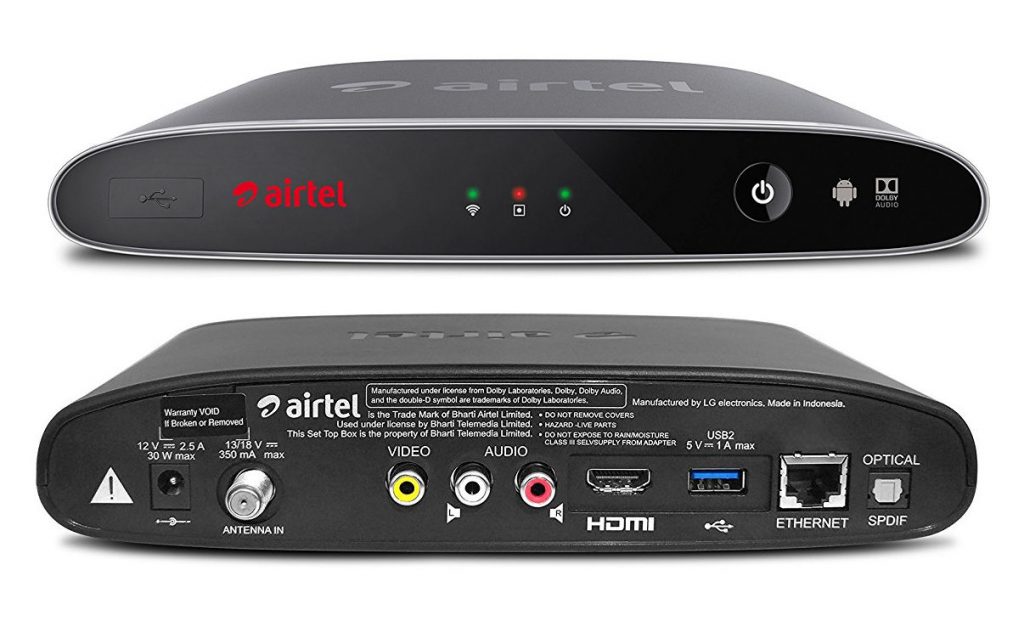Continuing with my series, the next entry in the list is Airtel Internet TV DTH set top box.

I used to have a regular Airtel DTH connection at my place; the non-smart ones where the Set Top Box connects to an external satellite dish antenna and you watch TV. One day the set top box straight up and died so I contacted Airtel for a replacement. They told me that they have an offer where if I pay a years’ worth of subscription fee at once, they will upgrade me to the new Airtel Internet TV set top box. The set top box was supposed to combine the best of DTH TV viewing and App based streaming along with:
- 1G Ethernet and WiFi connectivity
- 4K output with 4K Netflix capability (Along with Prime, Hotstar etc.)
- Voice activated remote with touch sensitive surface
- Internet enabled programme guide
- DVR capabilities with storage on external USB devices
I bought it mostly for 4K Netflix capabilities. I was sceptical about getting it because it ran Android TV (Fagdroid), but decided to keep an open mind and give it a try.
It would be safe to say that this was the worst product (across all categories) I ever bought in my life & realised it the same day. Android TV (Fagdroid) is the worst OS ever to power any gadget in the world, period. Some of the complaints that I faced (On day 1) were:
- Slow as fuck interface (Even with things like quad-core Qualcomm processor etc.). I blame this part entirely on the Android TV (Fagdroid) OS. Even changing channels took 2-3 seconds.
- Apps crashing all the time. Even the TV app which showed content from satellite crashed regularly with no apparent triggers.
- The smart Bluetooth remote control froze from time-to-time. The only way to recover it was to remove the batteries and insert them back again.
- Doing a factory reset was not a straight forward job. After the reset, half of the channels would disappear and would require going into settings and entering some satellite related parameters manually.
- Advertisements showing up randomly on the UI & also a perpetual, huge Airtel Logo on the corner of the screen
- Software updates would fix some issues and introduce others.
After tolerating this for a few months, I had had enough & even with 8/9 months of subscription remaining, I threw it in the trash. When I asked Airtel to move me back to the old (non-smart) set top box, they told me that was no longer possible. Eventually, this brought to an end the era of DTH in my house forever & I moved to streaming services permanently; also cementing my resolve to never buy anything Android (Fagdroid) powered ever again.


